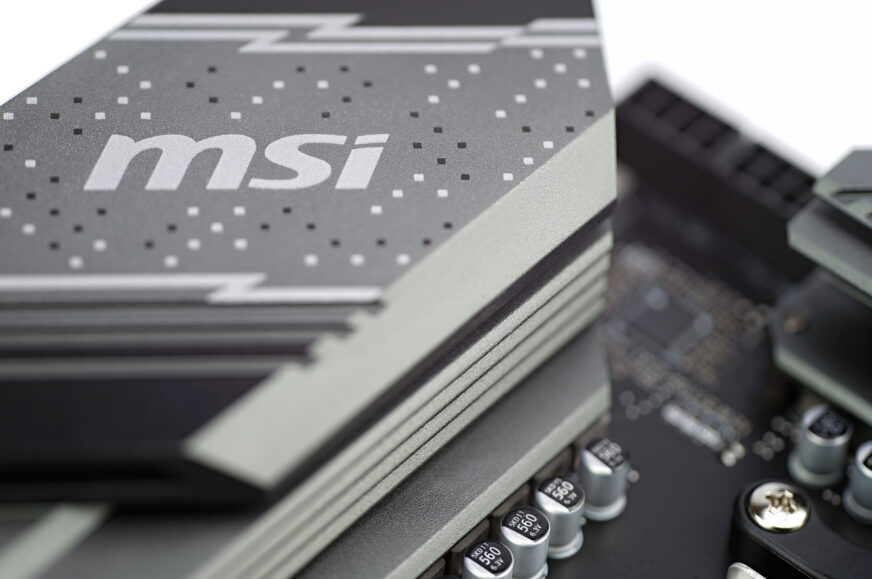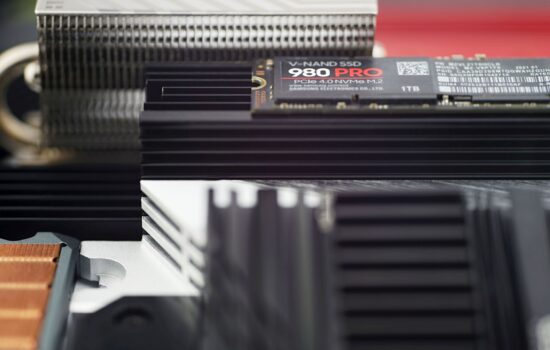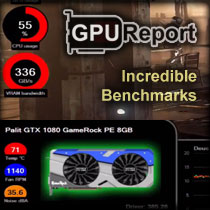Conclusion
If you don’t want to skimp on a motherboard for an AMD CPU, but also don’t want to pay more than you need to, the MSI B650 Gaming Plus WiFi appears to be an attractive option. The price is well under two hundred euros and yet it can handle even the Ryzen 9 7950X without any power limits. Although there are also things calling for improvement, the cheapest MSI B650 board in ATX format defends its position in a lower-budget gaming build.
Conclusion
A very good compromise between the A620 models and, say, the mid-range B650 motherboards. That’s how, in all simplicity, one can write about the MSI B650 Gaming Plus WiFi.
The advantage (compared to the A620 boards) is in wider connectivity and compared to the early B650 boards in a lower price. But at the same time, it can’t be taken to mean that you’re getting something “for free”. There is some cost cutting with the B650 Gaming Plus WiFi. Just by looking at how much power draw is achieved. This board can handle the Ryzen 9 7950X at maximum performance, but at a relatively low efficiency. The latter is both due to the hardware design of the VRM and the fact that the voltage regulation in the default settings does not reach the lower limit of its capabilities. By undervolting, you can get more attractive results. These appear, for example, even after simply limiting the TDP to 105 W, where the B650 Gaming Plus WiFi pulls away from the bottom of the rankings at high load and outperforms even the more expensive Gigabyte X670 Aorus Elite AX in efficiency. Under gaming load, however, the MSI board still lags behind a bit.
The VRM temperatures attacking 120 °C are a bit alarming, but it’s important to remember that thermal imaging is done without heatsinks and at the same time it’s powering a processor (R9 7950X), which in practice isn’t really counted on.And if it is, then with the PPT reduced to 142 W (and you can already stay within 85 °C). Anyway, the B650 Gaming Plus WiFi board is more suitable for the lower-power Ryzen 5 and Ryzen 7 processors, which is what it will mostly be sold with. With them, the efficiency will be decent already as well as the temperatures will be low enough, although it is still true that this board can handle everything, including a Ryzen 9 with a PPT of 230W. And even in harsh conditions in builds with quieter system cooling. The margin here is quite large, and the B650 Gaming Plus WiFi is always far from some “overheating with CPU multiplier reduction”. Of course, it’s not for some hardcore overclocking anymore, but boards that go together with high-end CPUs look different. This is an affordable option for regular build configurations that are relatively lower budget.
Worth praising and highlighting are the high speeds of the USB 3.2 gen. 2×2 interface. The 10-gigabit USB 3.2 gen. 2 ports are already slower, at the tail end of the comparison charts. This is what MSI boards with the B650 chipset seem to have in common. We saw similar results (extra-fast USB 3.2 gen. 2×2 and slower USB 3.2 gen. 2) with the MAG B650 Tomahawk WiFi.There has also been some improvement in the SSD cooler, which has always been significantly weaker in this class of MSI boards. We can’t have any complaints when it comes to CPU performance. In none of the tests (and that we went through quite a few of them…) the board shows any anomalies with any unexpected drops.
What’s worse is the low-load power draw, which is excessively high. Its management could use some fine-tuning (56W is really quite a lot, when other boards with the same R9 7950X are in the 21–41W range).
Considering the price, equipment and measurable features, the MSI B650 Gaming Plus WiFi is a board that should definitely not be missing from the broader list when deciding on the components of a new computer. With processors with power draw on the level of the Ryzen 7 7700X and lower, the lower efficiency of the VRM doesn’t detract that much from its quality. It’s just a shame about the higher power draw at low load. But this is a matter that can be resolved, and to deny this board the well-deserved “Smart buy!” award because of it would be unfair.
English translation and edit by Jozef Dudáš
| MSI B650 Gaming Plus WiFi |
| + Lower price... |
| + ... and attractive features for the price |
| + Stably handles even Ryzen 9 7950X without power limits |
| + As many as eight external USB connectors. That's a decent number for this class |
| + Effective VRM cooler... |
| + ... and finally, even on a cheaper MSI board, a fairly decent SSD cooler |
| + Very detailed fan management options |
| + Fast Ethernet connection in both directions |
| + Unusually large distance between the CPU socket and the first PCIe ×16 slot * |
| - High idle power draw |
| - Weaker efficiency in higher load... |
| - ... and higher VRM temperature. But this is a necessary tax for the lower price |
| Suggested retail price: 176 EUR |
* As a result, both convenient (de)mounting of expansion cards and extra support for very wide CPU coolers are ensured
Some of the tested boards are also available in the Datacomp e-shop
Special thanks to Blackmagic Design (for licenses for DeNoise AI, Gigapixel AI and Sharpen AI) and Topaz Labs (for licenses for DeNoise AI, Gigapixel AI and Sharpen AI)
- Contents
- MSI B650 Gaming Plus WiFi in detail
- What it looks like in the BIOS
- Methodology: Performance tests
- Methodology: How we measure power draw
- Methodology: Temperature and clock speed measurements
- Test setup
- 3DMark
- Borderlands 3
- F1 2020
- Metro Exodus
- Shadow of the Tomb Raider
- Total War Saga: Troy
- PCMark and Geekbench
- Web performance
- 3D rendering: Cinebench, Blender, ...
- Video 1/2: Adobe Premiere Pro
- Video 2/2: DaVinci Resolve Studio
- Graphics effects: Adobe After Effects
- Video encoding
- Audio encoding
- Photos: Adobe Photoshop, Affinity Photo, ...
- (De)compression
- (De)encryption
- Numerical computing
- Simulations
- Memory and cache tests
- M.2 (SSD) slots speed
- USB ports speed
- Ethernet speed
- Power draw without power limits
- Power draw with power limits
- Achieved CPU clock speed
- CPU temperature
- VRM temperature – thermal imaging of Vcore and SOC
- SSD temperature
- Chipset temperature (south bridge)
- Conclusion














Why did you test VRM heating without heatsinks?
It’s simple – to get an overview of which motherboards’ voltage regulators heat up more and which ones less. With a heatsink you would not get relevant results, because its higher surface temperature does not necessarily mean higher temperature of the VRM, but that it dissipates heat faster.
This can be seen well in thermalpad tests, where there are lower temperatures for VRMs with a lower surface temperature of the heatsink. The best would be to locate (by thermal imaging) hotspots without heatsinks, then apply a thermocouple to them, return the heatsink and measure like that. Such a measurement procedure would also take into account the efficiency of the coolers and we plan to implement it in the future.
Hello, Merry Christmas to all.
I just bought this mobo, which comes with bios ver. E7E26AKB.1M2. However, when I go to official website, cannot find this bios version. I also tried to update this mob with the latest 7E26v17, but my m-flash is not reading it at all from my usb stick. I tried Fat 32 and NTFS format, but without success. Can your team give me some advice what to do? Thank you.
It is possible that the version the mobo came with has not been released separately for download and has been replaced by a newer/fixed build on the download page.
Sometimes the mobo maker releases several point releases of certain bigger version of the BIOS and the newer ones replace the previous ones, until something like a final version appears that will be kept in the downloads section permanently.
If you want to keep this older BIOS for backup purposes, you can dump it to disk for keeping.
As for why the update tool can’t read your USB stick – not sure, but it can happen. It is recommended to use USB 2.0-only drives, and also drives of lower capacity (under 32 GB), sometimes USB 3.0 etc can cause problems with detection.
Sometimes the UEFI supports reading the image from a SSD or HDD attached to SATA port too (Gigabyte does IIRC, although not sure it supports NTFS, dunno about MSI now).
Thank you Jan for a quick reply. I must mention that I also tried to update bios from M-flash going directly to hard disk and finding bios file. Unfortunately, it didn’t see my bios file at all. Dunno know what to do and how to update to the latest one version.
When you read the USB disk, can you see the directories and files at all, or is the drive entirely unreadable?
Assuming you didn’t make a mistake like not unzipping the contents of the zip (I don’t think any of the uefi updaters can read inside zips…), not sure what else could be wrong. Besides unzipping, try double checking if your motherboard really matches the file (but you likely did that…)
If you can’t get this to work from the BIOS, you could use the BIOS Flash button procedure (with PC turned off), described here https://www.youtube.com/watch?v=iTkXunUAriE
Hei Jan,
Thank you for assisting me. However, I tried to contact store (one of the biggest in Norway) where I live, and they said to me that it is custom bios (made be its company). So, I am still waithing answer from them, how can I put the latest original bios version. Best regards,
Dean
That makes sense. I googled this issue and the replies also mentioned that some system builders use customised BIOSes (could even be just custom logo added to the image to show say, “Puget Systems” instead of MSI) and such a board won’t recognize the stock BIOS.
In theory, as a last resort it is possible that these custom boards could be flashed to stock BIOS using tools like Flashrom or external flashers (those CH341 adaptors). But once you use these methods where signatures and CRCs are not checked, it can get dangerous, so I would recommend against doing this unless it is the last resort and the BIOS update is critically needed.
And even so, you would have to be extremely careful with checking that the board is the proper revision that has the exact same components everywhere. If the borad has not just custom BIOS, but also hardware customizations, that could cause problems, potentially fatal problems.
I have bad experience with this, because I accidentaly flashed a corrupt image, bricking a board without a BIOS flashback ability, and it cost me a lot of time and related hassles before I managed to repair it.
Also, nice post. Keep going a good work. Thank you once again.
very informative article and very good job. thank you